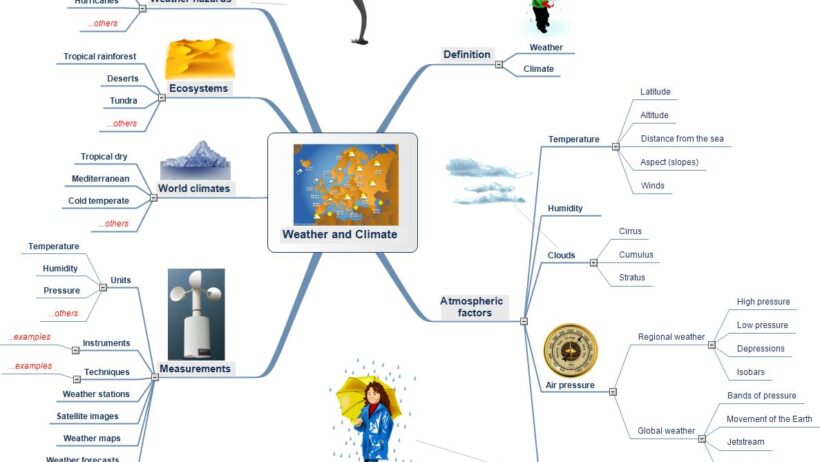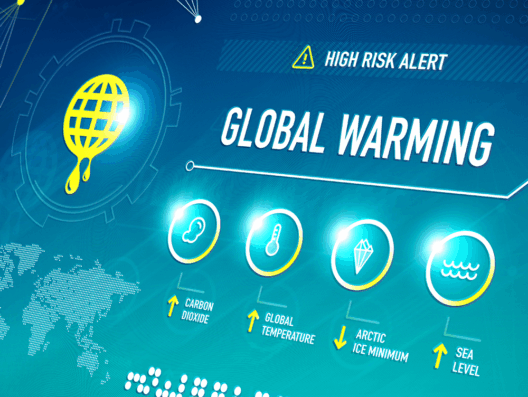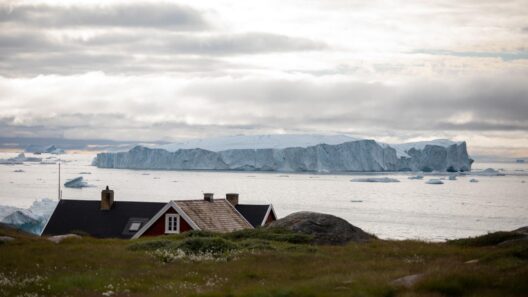Understanding climate examples is pivotal in grasping the intricate tapestry that comprises our planet’s weather patterns. Each region of the Earth exhibits a unique climate, influenced by a medley of factors including geography, altitude, and human activity. This exploration is not merely academic; it shapes our collective response to climate change and fosters a deeper appreciation for the natural world.
At the heart of this discussion lies the term “climate.” Typically, climate refers to the long-term patterns of temperature, humidity, wind, precipitation, and other atmospheric conditions in a specific region over extended periods, often 30 years or more. It diverges from weather, which constitutes the short-term atmospheric conditions experienced on a daily basis. For instance, a blistering summer day or a frigid winter night is weather, while the average temperatures and seasonal trends year after year delineate the climate.
To convey an understanding of climate examples, we need to situate ourselves within various geographic contexts. Regions such as the arctic tundra, equatorial rainforest, or temperate coastal zones offer rich, contrasting illustrations of how climate influences ecosystems, biodiversity, and human settlements. Each climate type presents unique challenges and opportunities that shape both natural and human systems.
Consider the polar regions, where the climate is characterized by extreme cold, ice, and minimal precipitation. The ecosystems here, including tar or tundra landscapes, support specialized life forms adapted to harsh conditions. This stark example teaches us about resilience and vulnerability within ecological frameworks. In turn, it compels us to reconsider the interconnectedness of climate, biodiversity, and human existence.
In contrast, tropical climates thrive near the equator, where warm temperatures and regular rainfall foster dense, biodiverse rainforests. These ecosystems are teeming with life, serving as critical carbon sinks and playing an essential role in global atmospheric regulation. The significance of such regions cannot be overstated; they act as climate stabilizers, impacting weather patterns far beyond their geographic borders.
The Mediterranean climate, characterized by warm, dry summers and mild, rainy winters, serves as another intriguing example. This climate supports diverse agriculture, making it a crucial breadbasket for many nations. However, the rising frequency of droughts and heatwaves linked to climate change poses significant risks to these agricultural systems. This ongoing metamorphosis in climate dynamics requires adaptation strategies that might reshape traditional farming practices and food security.
Understanding climate examples also necessitates a look at microclimates—small-scale environmental conditions that deviate significantly from their surrounding areas. Urban climates, for instance, can differ radically from nearby rural settings due to the urban heat island effect, where built-up areas retain more heat. These phenomena illustrate the human imprint on climate and beckon a reconsideration of urban planning and development.
A wealth of data now exists to help define and interpret these diverse climate examples. Climate scientists employ sophisticated models and simulations that integrate observational data from meteorological stations and satellite technology to elucidate long-term and short-term climate trends. These datasets help track changes in precipitation patterns, extreme weather events, and seasonal shifts, providing a clearer picture of how climate evolves and how societies must evolve in response.
One principal takeaway from delving into climate examples is the interconnectedness of local and global climates. The butterfly effect is a principle that reinforces this notion—where small changes in one area can provoke significant effects elsewhere. Hence, the impacts of climate change in one region reverberate through others, creating a ripple effect that transcends political and geographic boundaries. Understanding this complexity cultivates a sense of global stewardship, fostering collaborative efforts to counteract climate challenges.
Moreover, climate education plays a critical role in this narrative. By cultivating awareness about climate examples, individuals can comprehend the profound implications of their choices and actions on the environment. An informed population is empowered to advocate for sustainable practices and policies that mitigate climate change. Climate literacy, therefore, becomes a cornerstone of effective environmental activism.
In light of the current climate crisis, these insights urge a paradigm shift in our perspective. We must move beyond a simplistic understanding of climate change as merely a distant threat, recognizing it as an imminent challenge that demands immediate and collective action. By focusing on concrete climate examples, we can galvanize public interest and commitment to addressing the climate emergency.
Moreover, public policy must reflect the urgency of addressing these climate realities. Policymakers are tasked with weaving scientific knowledge into action plans aimed at reducing greenhouse gas emissions, enhancing resilience to climate impacts, and promoting sustainable development. Failure to recognize the significance of climate examples in decision-making can lead to disasters that jeopardize ecosystems and human welfare alike.
In conclusion, climate examples serve as a revealing lens through which to understand the world’s ever-evolving weather patterns. Their study enriches our comprehension of the multifaceted interactions between natural and anthropogenic systems. By fostering curiosity and awareness, we may inspire a collective shift towards sustainable living practices, thereby ensuring a more resilient future for generations to come. Climate examples are not merely illustrations; they are crucial narratives that forge connections, incite responsibility, and galvanize action to combat the pressing challenges posed by climate change.








